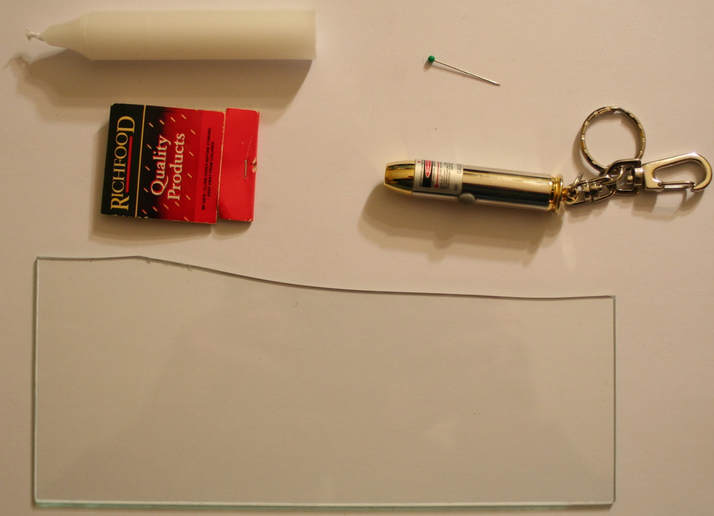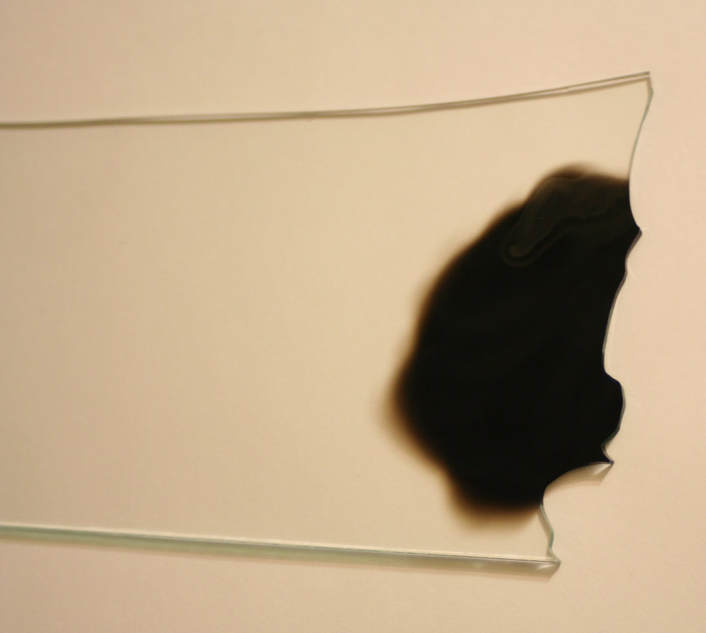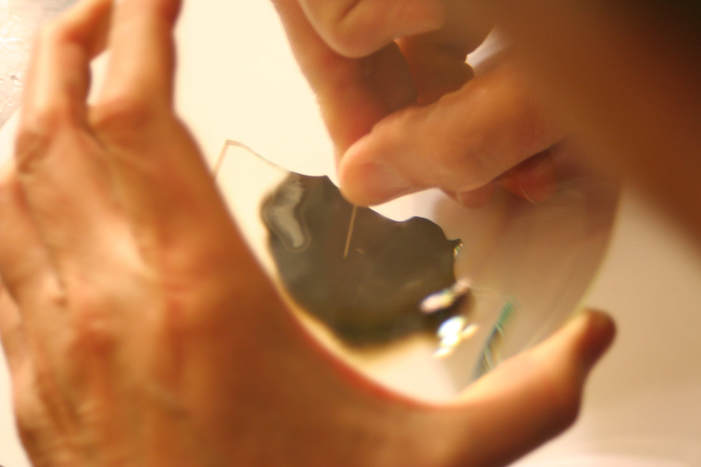|
In the late 1700s there was a lot of discussion in scientific circles regarding whether light was a particle or a wave. It was then that a British scientist named Thomas Young designed a famous experiment to settle the matter. Young reasoned that if light were a wave, then two streams of light that interact with each other would generate an interference pattern. What is this? First let’s look at the behavior of water waves. In the simulation below (Figure 1) there are waves that originate on the left side of the image (each of the blue lines represents the crest of a wave, whereas the dark space in between is the trough). These waves hit the yellow wall which has one opening or slit. The part of the wave that makes contact with the slit passes through and moves on to the right side spreading out in a radial pattern. However, when there are two slits, the waves originating from the two slits overlap with each other. In those areas where the crest of one wave intersects the crest of the other, the wave is taller. In those areas where the crest of one wave intersects the trough of the other, they cancel each other out. And in those areas where the trough of two waves meet, the wave is deeper. The pattern they form is called an interference pattern (Figure 2). If you were able to continuously record the waves arriving at the right hand side, you would see a large central swell where the waves originating from both slits reinforce each other, flanked by troughs where they cancel each other out, followed by progressively smaller swells where the intensity of the reinforcement of the waves diminish as they spread out. It would look something like Figure 3. Young expected that if light behaves like a water wave, and were forced through two slits, it would generate a similar interference pattern. On the other hand, if light is made up of particles, the light particles would go through the slits in a straight line generating two distinct images on the right hand side (no interference pattern). I decided to try to perform this experiment to see what results I got, and you can too! When Young performed the experiment 217 years ago he used sunlight, but we will use a laser pointer. Additionally (see below), among other things, we will need a flat glass, a candle, a pin, and matches (not meant as a product endorsement, just matches we’ve had for almost 20 years and barely used). Light the candle and place it on a surface such as a plate and cover one of the sides of the glass with soot. Don’t put the glass in contact with the candle flame for an extended period of time like I did (my glass shattered)! Allow for some cooling in between intervals of exposure to the candle flame. I finally covered one side of my broken glass in soot (careful with those sharp edges if there are any). Shine the laser pointer into the soot-stained surface to make sure light doesn’t go through. Proceed to make single and double slits on the glass’s soot-stained surface with the pin. You can aid yourself with a magnifying glass. This is how my slits looked. In theory they should be straight and as close as possible to each other, but this is the best I could do. I took advantage of a wooden ornament to set up the glass. I ended up holding the laser pointer with my hand, but it’s better if you can hold it in place say with a clamp. Be mindful not to look at the laser pointer straight on, it can damage your eyes! I darkened the room and shone the laser pointer through the single and double slits in the glass into a wall some 15 feet away, and I had another person take pictures with a smart phone. So what were the results? When I shone the laser pointer through a single slit, I obtained the pattern below. So if I were to shine the laser pointer through the double slits, I would expect two such blobs of light next to each other, if light behaves like a particle, right? But when I shone the laser pointer through the double slits, I obtained this: Those blobs of light flanking the central one and decreasing in intensity towards the sides are characteristic of the interference pattern (see Figure 3) that you would expect if light behaves like a wave! Of course, my experimental setup and slit construction were rather crude. Physicists working with more sophisticated equipment can obtain much better patterns. So did Young’s experiment settle the argument? Unfortunately at the time some heavyweights in science such as Isaac Newton favored the particle theory, so Young’s double slit experimental result was slow to catch on. However, in the end things turned out to be more complicated than they seemed (they always do). Not only did light display the behavior of a particle in other experiments, but other entities besides light such as electrons and even some large molecules that no one would ever think of as a wave were found to exhibit both particle and wave behavior. Nowadays light is thought of as having a particle-wave duality (it can exhibit properties of both waves and particles but not at the same time). However, the ingenious experiment designed by Young was improved upon in modern times and ended up generating some of the remarkable results that form the cornerstone of the revolutionary theory that nowadays we call quantum mechanics. And I just performed this experiment in my living room, and you can too! Now, isn’t that cool? Single and double slit GIFs by Lookang used here under an Attribution-Share Alike 3.0 Unported license. Wave by Klaus-Dieter Keller modified and used here under an Attribution 3.0 Unported license.
0 Comments
Your comment will be posted after it is approved.
Leave a Reply. |
Details
Categories
All
Archives
June 2024
|











 RSS Feed
RSS Feed